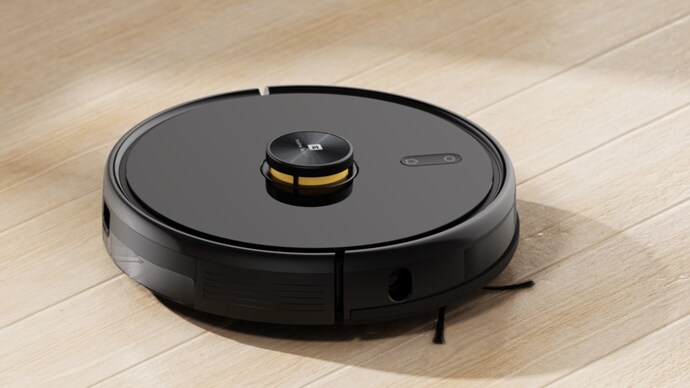Is a Robot Vacuum Worth It? What You Should Know in 2025

Robot vacuums have become increasingly popular over the past few years, and with advancements in technology, they’ve become more efficient, versatile, and affordable. In 2025, there’s no doubt that robot vacuums are more capable than ever before. But are they really worth the investment? Let’s take a closer look at the pros, cons, and key factors you should consider before deciding whether a robot vacuum is right for you.
1. What Are the Benefits of a Robot Vacuum?
Convenience and Time-Saving
The most significant advantage of a robot vacuum is its convenience. You can schedule it to clean your home while you’re at work, running errands, or even while you sleep. It requires little human intervention – just set it and forget it. Many models can even be controlled via smartphone apps, allowing you to start, stop, or schedule cleaning from anywhere.
- Time-saving: Instead of manually vacuuming every day or week, a robot vacuum does the work for you. It’s especially helpful in busy households or for people with mobility issues.
Consistent Cleaning
Robot vacuums are programmed to clean your home regularly, so you can expect consistent, daily or weekly cleanings. Many models will clean an entire room or area systematically, ensuring your floors are free from dust, dirt, and pet hair at all times. Over time, this consistent cleaning helps maintain cleaner floors with less effort on your part.
- Ideal for small or medium homes: If you live in a smaller apartment or house, robot vacuums are great for daily upkeep without much hassle.
Great for Pet Hair
For pet owners, robot vacuums can be a game-changer. Many newer models are specifically designed to pick up pet hair, preventing it from accumulating and getting caught in your home’s corners and hard-to-reach areas. Some models come with specialized brushes or powerful suction settings tailored for pet hair.
- Pet owners’ dream: With a robot vacuum, you don’t have to worry about constantly picking up pet fur or hair.
Compact and Convenient
Most robot vacuums are compact, meaning they can fit under furniture and reach areas where regular vacuums might struggle, such as underneath sofas, beds, or tables. This allows for thorough cleaning in places that might otherwise be neglected.
- Convenience for hard-to-reach areas: Their slim design helps them navigate around furniture and into tight spaces.
2. What Are the Drawbacks of Robot Vacuums?
Limited Suction Power
While robot vacuums are great for general maintenance, they often don’t have the same suction power as a traditional upright or canister vacuum. If you have deep carpets or need heavy-duty cleaning, a robot vacuum might not be able to do the job as well.
- Not ideal for deep cleaning: If you have thick carpets or a lot of ground-in dirt, a robot vacuum might need some help from a traditional vacuum for deeper cleans.
Battery Life and Charging
While battery life has improved over the years, most robot vacuums still need to return to their charging stations periodically. Depending on the model, they might run for 60 to 120 minutes on a single charge. If you have a larger home or multiple rooms to clean, the vacuum may need to recharge before it finishes the job. Some high-end models do return to their charging stations and resume cleaning automatically, but this isn’t true for all robot vacuums.
- Possible interruptions: For larger homes, battery life may not be long enough to clean the entire space in one go.
High Initial Cost
While robot vacuums have become more affordable in recent years, the price for high-end models can still be significant, often ranging from $400 to $1,500 or more. Depending on the features, you might be looking at a hefty upfront investment.
- Expensive models: If you want the latest features like mapping technology, voice control, and self-emptying dustbins, expect to pay a premium.
Maintenance
Robot vacuums require some ongoing maintenance. For instance, the brushes need to be cleaned periodically, and the dustbin should be emptied regularly. Some models also have filters that need to be replaced from time to time.
- Not entirely maintenance-free: While robot vacuums save time, they still require occasional care to keep them running smoothly.
3. What Features Should You Look for in a Robot Vacuum?
4. Smart Mapping and Navigation
In 2025, many robot vacuums come equipped with advanced LiDAR (Light Detection and Ranging) or visual navigation systems, which help the vacuum map out your home. This means it can clean your space more efficiently and avoid obstacles like furniture, pets, and cables. Higher-end models may even allow you to customise the cleaning areas or create “no-go zones” in specific rooms.
- Efficiency: Smart mapping ensures your robot vacuum doesn’t miss spots and doesn’t clean the same area repeatedly.
- Suction Power and Brush Design
The suction power of a robot vacuum is critical for pet hair removal and dirt cleaning. Look for models with high suction and specialised brushes designed to grab and remove pet hair from carpets and hard floors. Some models have tangle-free brushes that prevent hair from wrapping around the rollers.
- Pet-specific features: If you have pets, make sure the robot vacuum is designed to handle pet hair.
- Battery Life and Charging
If you have a larger home, look for a robot vacuum with a long battery life, ideally more than 90 minutes. Some high-end models can return to their charging stations automatically when the battery is low and resume cleaning once they’re charged.
- For larger spaces: Choose a model with good battery life and automatic recharging if you have a large house or multiple floors.
- Self-Emptying Dustbin
Some high-end models feature a self-emptying dustbin, which means the vacuum automatically empties its contents into a base station after each cleaning cycle. This can be particularly useful for pet owners, as it reduces the need for constant maintenance.
- Hands-off cleaning: A self-emptying dustbin adds convenience, especially in homes with heavy pet shedding.
- Smart Features
Look for robot vacuums that offer smart app connectivity, so you can control them via your smartphone or voice commands (with Alexa or Google Assistant). These features allow you to set schedules, monitor cleaning progress, and customize settings easily.
- Tech-savvy: Smart features make it easy to control and personalise your robot vacuum’s cleaning patterns.
- Is a Robot Vacuum Worth It for You?
Whether a robot vacuum is worth it really depends on your needs and lifestyle:
- For small to medium-sized homes: If you live in a smaller home or apartment and want regular cleaning with minimal effort, a robot vacuum can save you time and keep your floors consistently clean.
- For pet owners: If you have pets that shed a lot, a robot vacuum can be a game-changer for keeping pet hair in check. Models with strong suction, tangle-free brushes, and a self-emptying dustbin can be particularly helpful.
- For busy people: If you’re constantly on the go and want a low-maintenance cleaning solution, a robot vacuum can be an ideal solution. Scheduling it to clean while you’re out of the house means you’ll return to clean floors without lifting a finger.
- For larger homes: If you have a large home with thick carpets or a lot of furniture, you may still want to rely on a traditional vacuum for deep cleaning, as robot vacuums might not have the suction power to clean deeply or cover the entire area in one go.
Conclusion
In 2025, robot vacuums have become more capable, efficient, and feature-rich, making them an attractive option for busy households, pet owners, and anyone looking for a convenient cleaning solution. While they’re not perfect (and not a complete replacement for traditional vacuums), they are certainly worth considering for regular, low-effort cleaning, especially if you have pets or limited time for cleaning. If the upfront cost and maintenance are manageable for you, a robot vacuum can be a valuable addition to your cleaning routine.

Source: Is a Robot Vacuum Worth It? What You Should Know in 2025



